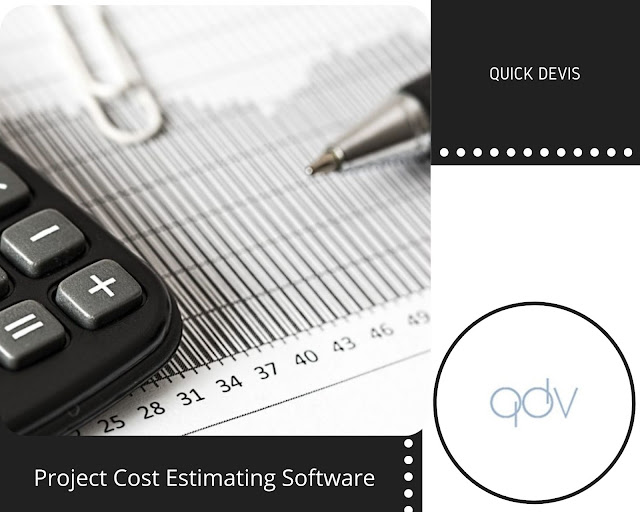Best Free vs. Paid Cost Management Software—Which One Is Worth It?
The New Budgeting Challenge: Smart Spending Without Surrendering Control
Cost containment is no longer merely a matter of minimising cost. It's about smarter, data-driven choices, optimised workflow, and allocating financial resources against business objectives. With the breakneck pace of digital change happening in every sector, businesses seek the best ways to manage their budgets, avoid waste, and prepare for future growth.
Current research indicates that companies that practice proper cost management systems can achieve up to 30 percent savings on operating costs per year. That is a high figure for businesses of every size. But with the growing demand for intelligent solutions comes a growing number of tools available.
This raises a critical question: Do you use a free tool or invest in a paid one? In this article, we will contrast both alternatives so that you can decide which of the best cost management software is worth your time and investment.
Examining Free Cost Management Software: Convenient, But With Certain Limitations
Free cost management software is a great place to begin for small businesses, freelancers, and startups. It typically includes the basics like expense tracking, budgeting, and simple reporting.
What Free Tools Typically Provide:
Simple setup with minimal training needed
Fundamental budgeting and cost-tracking capability
Something of reporting and data export capabilities
For companies with low requirements or a small project list, these tools may be useful. They provide a risk-free method to try digital cost tracking and see the benefit of automation.
But these advantages have limitations.
Where Free Tools Often Fall Short:
Limited features that cannot accommodate sophisticated project requirements
Few or no integration possibilities with accounting or estimating software
Basic reporting capabilities that might not be very informative
Lack of customization and scalability as the business expands
Little or no customer support when technical problems crop up
As business expands, these constraints can act as a bottleneck. Teams can spend more time handling spreadsheets and fixing workflows than executing strategy.
Knowing Paid Cost Management Software: Designed for Effortlessness, Accuracy, and Expansion
Paid cost management software is intended for businesses that wish to obtain more from their budgeting procedures. These programmes possess much more comprehensive capabilities and are customised to suit the needs of teams that oversee various projects, deal with various vendors, and need precise cost forecasting.
Major Benefits of Paid Software:
Imprimante de access to sophisticated tools of budgeting, forecasting, and resource planning
Real-time dashboards that offer current financial data
Seamless integration with estimating software and accounting systems
Role-based access for multiple team members and departments
Strong customer support, onboarding, and product training
One of the most significant reasons companies choose paid software is because of its scalability. The more complex project requirements become, the more the software adjusts to new needs without users having to resort to workarounds or fixes by hand.
Secondly, most paid solutions have built-in automation tools that save time, including automatically generated reports, budget warnings, and integration with project schedules. These tools directly influence team productivity and decision-making.
Comparing the Two: Key Areas to Evaluate Before Making a Choice
To make the best decision, take a look at your particular business requirements. Here are some of the most important areas in which free and paid best cost management software vary:
Feature Set
Manual entry, basic reports, and a simple interface are what free tools usually provide. Paid solutions extend beyond those to include advanced planning, real-time analysis, and the ability to customise reporting.
Integration Capabilities
Free tools tend to be standalone. Paid tools are intended to integrate with other key business platforms, such as ERP systems, estimating software, and customer management software.
Team Collaboration
Most free versions are standalone, single-user platforms. Paid versions enable multiple users with permission settings, so it is easier for finance, project, and management teams to collaborate.
Data Security
Data protection and backup facilities are stronger with paid tools. This is of the essence in companies that handle sensitive financial data.
Customer Support
While free versions leave you on your own to guess using forums and FAQs, paid versions provide access to experts for support, which ensures quick and effective resolution of issues.
Features to Look For in the Best Cost Management Software
Whether you're looking at a free or paid solution, you want to consider the essential capabilities provided by any platform. The best cost management software should feature:
Real-time cost monitoring between projects
Reported and customizable dashboards with in-depth reporting
Compatibility with estimating and accounting systems
Visual forecasting tools within budget planning
Secure cloud storage with automated data backups
Selecting software with these features guarantees your company possesses the tools necessary to track, manage, and optimise costs on all projects.
Conclusion: Why Paying for the Right Software Often Pays Off
Ultimately, the decision between free and paid cost management software is a matter of your business requirements, project complexity, and growth ambitions. Free products are helpful for simple or short-term projects but lack functionality and flexibility.
Paid software provides an unmistakable benefit when it comes to performance, integration, and value in the long run. For companies interested in developing stronger cost control systems, enhancing team collaboration, and growing with certainty, investing in the best cost management software tends to be the better option.
If your organisation is ready to move beyond the limitations of spreadsheets and free tools, and you’re looking for software that integrates seamlessly with powerful estimating tools, Quick Devis provides a professional-grade solution built to support your cost management from start to finish.
Get in touch with us today and discover how our platform can streamline your entire project budgeting process.



Comments
Post a Comment